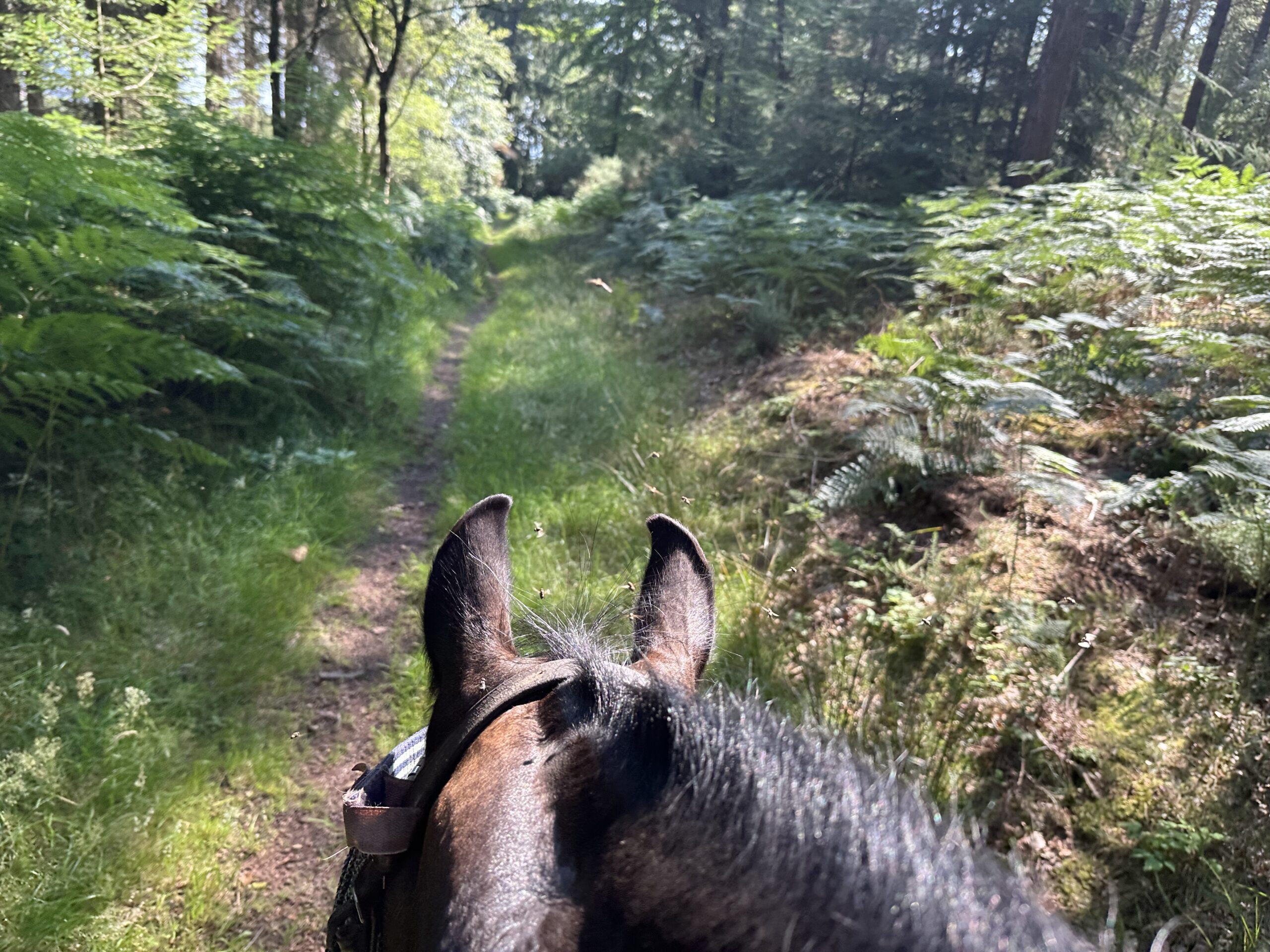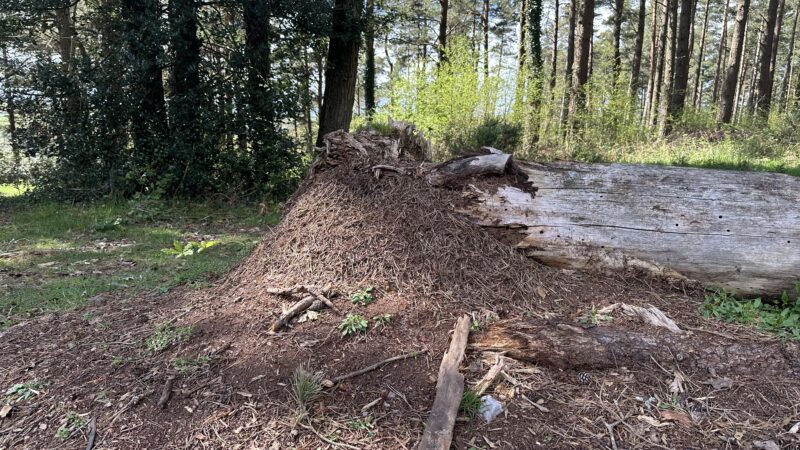Into the woods for the green pause of mid-summer

This is the time of the green pause, when the wood is heavy and stilled, its main growth rush over, poised before autumn ripening. Quietness hangs between the trees, disturbed only by the high, distant keening of a young buzzard.
Riding early on a hot morning, my horse’s neck is soon damp with sweat. Veins rise on his sleek, bay shoulders as he puffs his way up the hill. We go slow and keep in the shade, avoiding the open heath where grasshoppers are already zizzing madly. We hope to elude the horseflies, but they find us anyway, sawing into our flesh with their serrated mouthparts.
I slap one on my bare arm and another on the horse’s rump where it’s too high for him to kick away. Both leave a tiny trickle of blood and an itchy bump, a reaction to their saliva. The biters are all females, hungry for protein to make eggs.
We move into a trot in a bid to outpace the clegs and head further into the forest. Bracken rises on each side of the track, brushing us as we pass, releasing a pungent, savoury odour characteristic of late summer.
As we canter along a grassy ride, there’s a sweet passing stench of something small and dead rotting in the undergrowth.
The leaf canopy has deepened in the last month and taken on a blue glint. Low in the understorey, the colour solidifies into blue-black beads, the bilberries known on Exmoor as whortleberries. They are one of the first fruits of the late summer, ripening around Lammas – today, 1 August.

Lammas, or “loaf mass”, was one of the quarter days in the old agricultural calendar, halfway between the summer solstice and autumn equinox. It marked the end of haymaking and the beginning of harvest. Bread was baked and taken to the church to be blessed as part of a tradition that may reach back to pre-Christian times.
The woods will respond in their own way, with a short season of renewed growth ahead. Young, vigorous trees often develop “Lammas leaves”, new shoots that replace foliage damaged earlier in the year by weather and insects.
First published 1 August 2024 in The Guardian’s Country Diary column.





